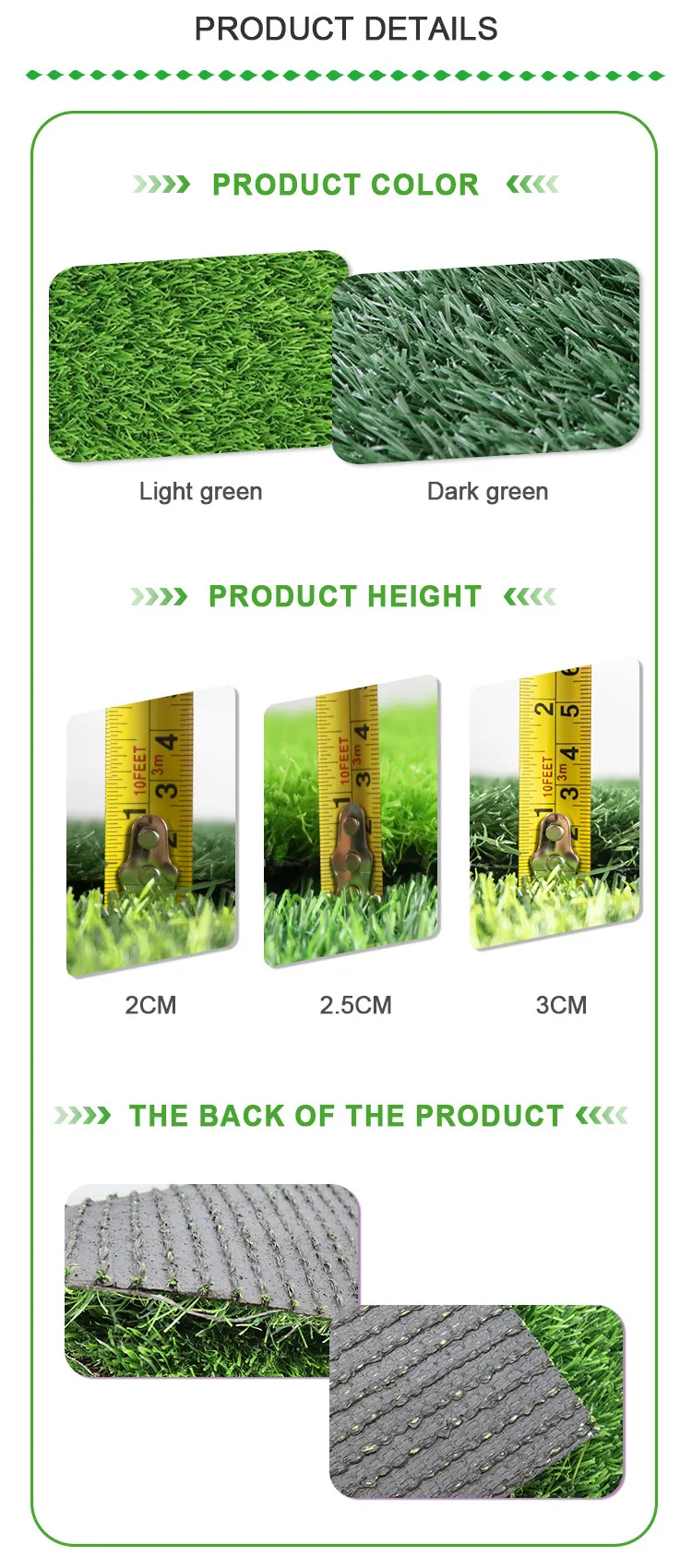
- Afrikaans
- Arabic
- Belarusian
- Bengali
- Czech
- Danish
- Dutch
- English
- Esperanto
- Estonian
- Finnish
- French
- German
- Greek
- Hindi
- Hungarian
- Icelandic
- Indonesian
- irish
- Italian
- Japanese
- kazakh
- Rwandese
- Korean
- Kyrgyz
- Lao
- Latin
- Latvian
- Malay
- Mongolian
- Myanmar
- Norwegian
- Persian
- Polish
- Portuguese
- Romanian
- Russian
- Serbian
- Spanish
- Swedish
- Tagalog
- Tajik
- Thai
- Turkish
- Turkmen
- Ukrainian
- Urdu
- Uighur
- Uzbek
- Vietnamese
artificial grass football pitch
Oct . 05, 2024 18:58 Back to list
The Rise of Artificial Grass Football Pitches
In recent years, artificial grass football pitches have gained immense popularity among sports enthusiasts, clubs, and recreational facilities. As an innovative solution to traditional grass pitches, these synthetic surfaces offer numerous benefits that enhance the playing experience while ensuring sustainability. This article explores the various advantages of artificial grass football pitches, their construction, maintenance, and the impact they have on the future of the sport.
Advantages of Artificial Grass
One of the primary advantages of artificial grass football pitches is their durability. Unlike natural grass, which can become worn out and patchy due to heavy usage, artificial turf is designed to withstand constant play without losing its performance quality. This means that clubs and facilities can schedule more matches and training sessions without the fear of damaging the pitch.
Additionally, artificial grass provides a consistent playing surface irrespective of weather conditions. Rain or snow can render a natural grass pitch unplayable, leading to match cancellations and schedule disruptions. In contrast, artificial grass drains efficiently, allowing for quick recovery after rain and minimizing the risk of muddy, slippery surfaces. This reliability is particularly important for clubs operating in regions with unpredictable weather patterns.
Eco-Friendly Considerations
While some may argue that synthetic grass is less environmentally friendly compared to natural grass, advancements in technology have made artificial pitches more sustainable. Many modern artificial grass products utilize recycled materials, and they are designed to reduce water consumption significantly. Traditional grass pitches frequently require extensive watering, which can strain local water resources. In contrast, synthetic pitches require very little water for maintenance, making them an environmentally responsible choice.
Moreover, artificial grass eliminates the need for harmful pesticides, herbicides, and fertilizers, which can have detrimental effects on the environment and local ecosystems
. As such, the transition toward synthetic surfaces aligns well with the growing global emphasis on sustainability and ecological responsibility in sports.artificial grass football pitch

Maintenance and Longevity
Artificial grass football pitches are designed for low maintenance compared to their natural counterparts. While natural grass requires regular mowing, watering, and fertilization, artificial turf only requires occasional brushing and infill replenishment to maintain its appearance and playing quality. This not only saves time for facility managers but also reduces long-term maintenance costs.
Furthermore, the lifespan of an artificial grass pitch is typically between 10 to 15 years, depending on the quality of the materials used and the level of maintenance provided. With proper care, these pitches can continue to deliver excellent performance, making them a significant investment for football clubs and sports facilities.
Impact on the Future of Football
As the demand for football continues to grow, so does the necessity for reliable and high-quality playing surfaces. Artificial grass football pitches present a viable solution to meet this demand, allowing clubs to host more matches and training sessions throughout the year. This, in turn, encourages greater participation in the sport, enhancing community engagement and talent development.
Moreover, the use of artificial grass opens doors for innovative training techniques and programs. Coaches can implement various drills and training regimes without the limitations imposed by natural grass conditions, fostering skill enhancement in players.
Conclusion
The rise of artificial grass football pitches signifies a transformative shift in how the sport is played and enjoyed. Combining durability, sustainability, and reduced maintenance needs, these synthetic surfaces represent the future of football. As technology advances, it is likely that we will see even more enhancements in the quality and performance of artificial grasses, further cementing their place in the sporting landscape. Embracing this change not only benefits clubs and players but also aligns with the global movement towards sustainability in sports. Whether you are a player, a coach, or a fan, the future of football looks bright with artificial grass leading the way.
-
The Benefits of Artificial Turf for Indoors
NewsJul.15,2025
-
How Artificial Grass Suppliers Ensure Quality Products
NewsJul.15,2025
-
Artificial Grass and Pets: A Space for Relaxation
NewsJul.08,2025
-
Balcony & Outdoor Decoration with Artificial Grass
NewsJul.08,2025
-
Best Indoor Artificial Grass for Home
NewsJul.07,2025
-
Best Pet Turf for Dogs: Safe & Durable Artificial Grass Options
NewsJul.07,2025
Products categories









